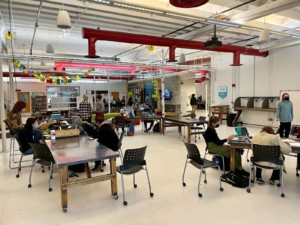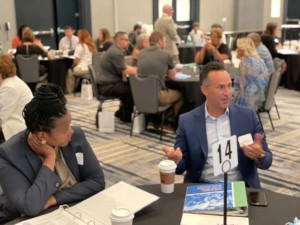Build on Strengths, Explore Interests, Shore Up Weaknesses

About 40 months ago Nicholas Carr was suggesting that the Internet was making us stupid—which I thought was stupid. So I wrote Getting Smart: How Personal Digital Learning Will Make Us Smart. In the first chapter I summarized my optimism:
I, for one, am very optimistic. Education has a profound role to play in how this country thinks about the future and the level of preparation its young people have for shaping it. We can innovate; I see it happening every week… If you extend a few trends and connect a few dots, you can imagine a system of public education with dramatically better results for the kids that need them most.
Last year I presented a couple dozen versions of a Blended Learning Road Trip packed with examples of schools, districts, and networks innovating. Our team had the opportunity to profile great schools. It is exciting to see progress of personalized learning on so many fronts. Here are some examples:
- 35 High Schools Worth Visiting
- 38 Elementary & Middle Schools Worth Visiting
- Deeper Learning for Every Student Every Day (including 20 school profiles)
When thinking about American education (Chapter 2) three years ago, I said:
Our kids are ready for new learning options: one-to-one mobile access, personalized content, virtual environments, social networks, big questions, and engaging applications. They are ready to learn at home, on the job, in the community, as well as at school. The question is, are we ready to create the schools our students deserve?
We need to build on children’s strengths, leverage exploration of their interests, shore up in areas where they are weak, and graduate them with a personalized plan. In other words, we need to customize learning.
“Educating today’s young people requires us to really get to know our students—their interests, strengths, and approaches to learning—and to use this information to customize the learning that takes place inside of our classrooms,” said Curtis Chandler, Kansas Teacher of the Year.
I’m encouraged by improved access to technology and the adoption of adaptive instructional systems. And even though learning platforms didn’t progress as much as I thought they would since 2010, I remain optimistic that learning platforms will improve significantly the next 36 months and that will make it easier to personalize learning.
For more on learning platforms and schools that promote youth development, see:







0 Comments
Leave a Comment
Your email address will not be published. All fields are required.